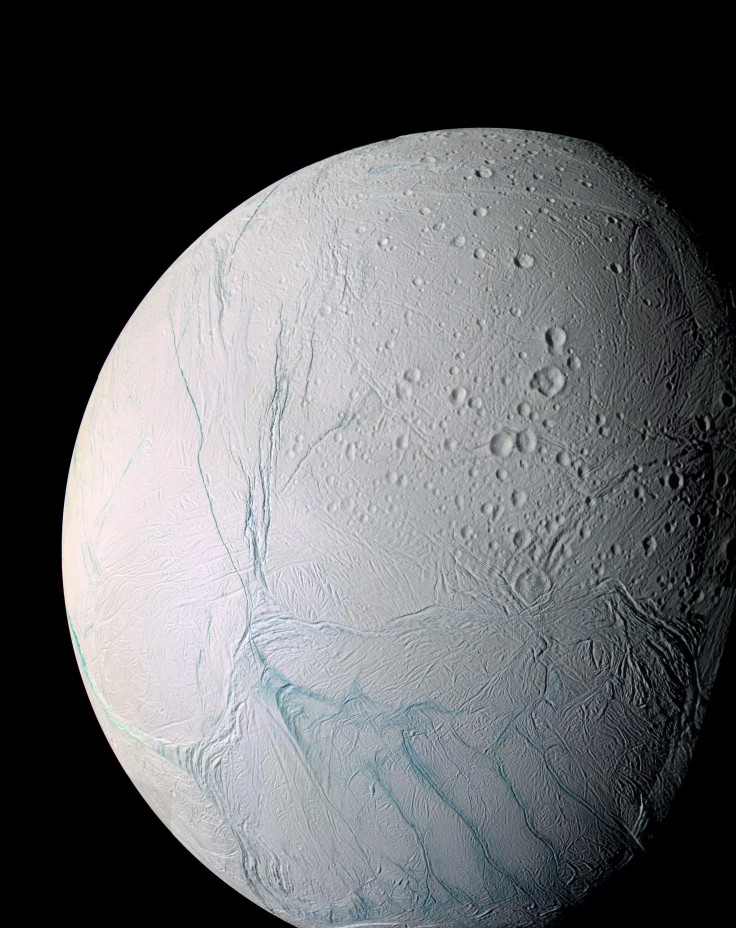Cassini Finds Heat Under South Pole Of Enceladus, Saturn’s Icy Moon

During its first flyby of Enceladus, Saturn’s sixth-largest moon, in 2005, the Cassini spacecraft found plumes of water vapor and ice being sprayed out into space from the south pole of the icy body, indicating the presence of liquid water under the frozen surface. Analysis of data collected by Cassini during a 2011 flyby has now shown that the underground liquid water may exist a lot closer to the surface than previously thought.
The analysis of the 2011 flyby data was reported in a paper published Monday in the journal Nature Astronomy.
“During this flyby, we obtained the first and, unfortunately, only high-resolution observations of Enceladus' south pole at microwave wavelengths,” Alice Le Gall from Laboratoire Atmosphères, Milieux, Observations Spatiales (LATMOS), and Université Versailles Saint-Quentin (UVSQ), France, said in a statement Monday. She is also an associate member of the Cassini RADAR instrument team and lead author of the paper, titled “Thermally anomalous features in the subsurface of Enceladus’s south polar terrain.”
Read: Cassini Photographs Pan, Saturn’s Bizzare-Shaped Moon
“These observations provide a unique insight into what is going on beneath the surface. They show that the first few meters below the surface of the area that we investigated, although at a glacial 50-60 K, are much warmer than we had expected: likely up to 20 K warmer in some places. This cannot be explained only as a result of the Sun's illumination and, to a lesser extent, Saturn’s heating so there must be an additional source of heat,” Le Gall added in the statement on the European Space Agency (ESA) website.
The observations cover an arc-shaped region near the moon’s south pole, about 500 kilometers long and about 25 kilometers wide. Based on their analysis, the research team thinks it is likely that the entire region under the south pole is warm, and that the underground ocean could be just 2 kilometers below the surface.
The subsurface heating could be caused by tidal cycles of the moon as it travels along its eccentric orbit around Saturn.
“What is the warm underground ocean really like and could life have evolved there? These questions remain to be answered by future missions to this ocean world,” Cassini Project Scientist Linda Spilker at NASA's Jet Propulsion Laboratory, Pasadena, California, said in a statement on the NASA website.

The Cassini-Hugyens mission is a collaboration between NASA, ESA and ASI, the Italian space agency. It was launched on Oct. 15, 1997, and landed on Titan, Saturn’s largest moon, in January 2005. It has studied the planet and its moons since then, and is in the final phase of its mission. To avoid possible contamination of Saturn’s moons, the spacecraft will be destroyed by diving into the planet’s atmosphere in September.
© Copyright IBTimes 2024. All rights reserved.





















